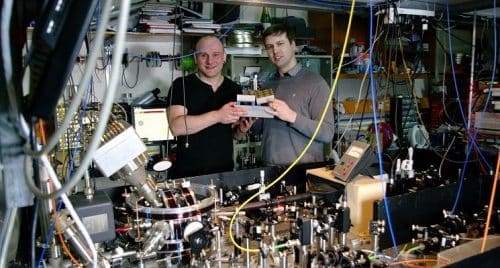Scientists have devised a simpler modular system for quantum computing that transferred ions using electric fields rather than laser beam alignment, allowing for a scalable architecture.
This project is being conducted as a collaboration between researchers from Google, Aarhus University in Denmark, RIKEN Research Institution in Japan, and Siegen University in Germany. This worldwide partnership is led by the University of Sussex in the United Kingdom.
On a tiny scale, quantum computing with trapped ions is accomplished by aligning individual laser beams onto individual ions, each ion constituting a quantum bit. A machine with billions of quantum bits would require billions of properly aligned lasers, which would be impracticable.
“For many years, people said that it was completely impossible to construct an actual quantum computer,” said Professor Winfried Hensinger, Director of the Sussex Centre for Quantum Technologies and research lead for the project. He has been working on trapped ion quantum technology for over a decade. “With our work we have not only shown that it can be done but we’ve delivered a nuts and bolts construction plan to build an actual large-scale machine. And now we’re building a prototype based on this design,” he said.

The modules are built using silicon microfabrication techniques that are achievable with current 5nm technology and control all operations as stand-alone components. The quantum bits are communicated between individual modules utilising electric fields and long-wavelength (microwave) trapped ion quantum gates. According to the researchers, this is 100,000 times faster than utilising an optical fibre link and allows several modules to be joined to build a large-scale device.
The suggested architecture can use a high error–threshold surface error correction code to execute fault-tolerant operations, and the concept is adaptable to various trapped ion quantum computer designs, such as photonic link systems.
“The availability of a universal quantum computer may have a fundamental impact on society as a whole. Without doubt it is still challenging to build a large-scale machine, but now is the time to translate academic excellence into actual application, building on the UK’s strengths in the technology,” said Winfried. ‘We are very excited to work with industry and government to make this happen.”
Read the entire study here.





